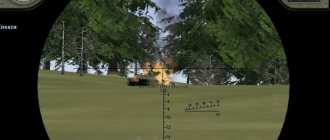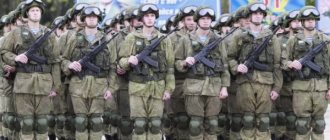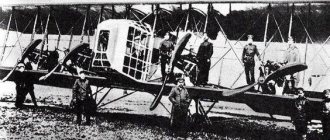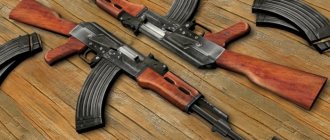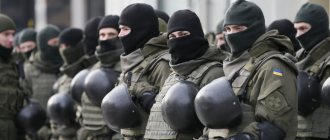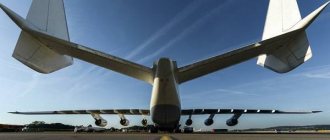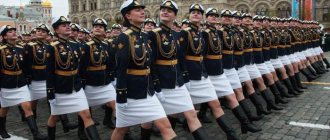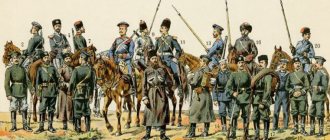The changing of the guard on Red Square is a fascinating sight. The Eternal Flame burns at the Tomb of the Unknown Soldier. Every 60 minutes, measuring their steps, three soldiers from the 1st company of the Kremlin Regiment (Presidential), accompanied by a guard, walk, attracting admiring glances from residents of the capital and its guests. Fit, strong-willed guys in impeccable uniforms freeze for a minute in front of the undying flame in order to mentally say once again: “Your name is unknown, your feat is immortal.” Then the guards are divorced.
Canceled and reinstated
For a long time, when going to Moscow, every Soviet person and foreign guest planned to visit the Mausoleum. The excursion program included an unusual sight: a regular changing of the guard. Much has been modernized on Red Square. The color and cut of military equipment and some details of the ceremony changed. However, Post No. 1 itself, established in 1924, was associated among the residents of the USSR with something unshakable. But perestroika came and made its own adjustments: in the second month of autumn in the stormy year of 1993, it ceased to exist.
In addition to the Mausoleum, on the main square of Russia (in Alexander Park) there is the Tomb of the Unknown Soldier. In front of her is the Eternal Flame, lit on the eve of Victory Day, May 8, 1967. No guard was provided. On December 8, 1997, the Decree of the Russian Head of State saw the light of day. The document prescribed the establishment of such a post.
The remains were reburied in the park in 1966, on the eve of the 25th anniversary of the victory over the Nazis in the battle of Moscow. Before this, the warrior was buried in a common grave for those killed in battle, where the Bayonet monument is now installed (Leningradskoe Highway, 41 km). After the planned design work, the surroundings of the Kremlin were replenished with an architectural ensemble in honor of the fighters, whose name has sunk into oblivion. The memorial was inaugurated on May 8, 1967.
The guard of honor at the Eternal Flame at the Tomb of the Unknown Soldier in Moscow has been standing for 15 years
On December 12, 1997, by decree of the President of the Russian Federation dated December 8, 1997, a permanent post of honor guard from the Presidential Regiment was established at the Eternal Flame at the Tomb of the Unknown Soldier in Moscow. According to the decree, the changing of the guard at the post occurs every hour from 8 a.m. to 8 p.m. In exceptional cases, by decision of the head of the Federal Security Service of the Russian Federation, the guard of honor may be posted at other times.
An honor guard post consisting of two sentries was first established by order of the head of the Moscow garrison dated January 26, 1924 at the temporary wooden Mausoleum of V.I. Lenin, built a few days after the death of the leader of the first Soviet republic according to the design of the architect Alexei Shchusev. The first sentries were led to the post at the Mausoleum by the guard, Janos Meyszaros. At 4 p.m., cadets Grigory Koblov and Arseny Kashkin stood near Lenin’s coffin on a wooden platform on Red Square. When the coffin was lifted and slowly carried, they walked on the sides, and when they reached the Mausoleum, they turned to each other and froze with rifles at the entrance.
In 1924-1935, cadets of the United Command School named after the All-Russian Central Executive Committee, located in the Kremlin, kept a constant watch on Red Square. Since 1935, the Honor Guard has been formed from soldiers of the special Kremlin garrison. At different times, his staff included a different number of guards - from one to one and a half platoons (about 30-50 people).
The future guards of Post No. 1 underwent daily grueling training: the soldiers practiced a special Kremlin marching step, rifle techniques, and coordination of movements. It was necessary to learn how to approach the post correctly and on time and make a shift. For this purpose, a special wooden model of the Mausoleum portal was made, where during training the soldiers achieved impeccable clarity.
In the 1960s, the tradition of periodically displaying paired posts near the Mausoleum of V.I. on special occasions was revived. Lenin. Next to the Kremlin soldiers stood veterans of the unit who graduated from the Military School named after the All-Russian Central Executive Committee and came to traditional training camps from all over the country.
The ceremonial post was removed after the events of October 3-4, 1993. The order to stop guard duty at the Mausoleum was given by the head of the Main Security Directorate. Since October 6, no sentries have been posted at Post No. 1.
Until 1997, there was no permanent guard post at the Eternal Flame at the Tomb of the Unknown Soldier. The sentries were displayed only for the period of solemn and memorable events and the laying of wreaths. In December 1997, the order of duty and the ritual of changing guards were approved for the honor guard, and a new military uniform was developed. The posts were appropriately equipped and equipped with the necessary technical means and communications. On December 12, at 8 o’clock in the morning, the breeder brought the first shift to the main post of the country.
In the solemn ritual of changing the sentries at the Tomb of the Unknown Soldier, the Kremlin step practiced to perfection is impressive: from the outstretched toe to the ground at a distance of 20 centimeters. The straight movement at the knee of the leg comes from the hip, while both the right and left sole of the soldier should fall to the same line. This difficult step has remained since tsarist times.
Army photos on Shutterstock: Army and military photos.
Wreaths and flowers are laid at the Tomb of the Unknown Soldier in memory of those killed in the Great Patriotic War on May 9 and other significant days for the country. Leaders of foreign delegations pay tribute to the heroes here during their visits to Russia.
In recent years, a tradition has been born: early in the morning on Victory Day, veterans of the Patriotic War and young people gather here for a Memory Watch with lit candles.
Maresyev and Brezhnev
What does a monument look like that is especially expressive during the changing of the guard? The following component of the artistic form in bronze is placed on Red Square: a battle flag hangs from a tombstone, a soldier’s helmet lies on it, and the whole thing is crowned with a laurel branch. The flame of memory of the fallen was lit personally by Leonid Ilyich Brezhnev. Documentary footage has been preserved in which the General Secretary of the Central Committee of the Communist Party of the Soviet Union, bending his knee, brings a torch to the burner, as if giving a countdown to a new period in the life of the memorial.
A remarkable fact: Brezhnev accepted the torch from the hands of a native of the city of Kamyshin in the Volgograd region, Hero of the Soviet Union Alexei Petrovich Maresyev. In 1942, a fighter pilot's plane was shot down in the sky over Valdai. The pilot survived, but both legs were amputated. He learned to walk with prosthetics and returned to combat duty. They say that Alexey Petrovich walked with everyone on equal terms, without visible effort, as if nothing like this had happened to him.
In 2009, the Memorial gained national significance. It was reconstructed. Due to work to expand the complex, there was no guard duty until February 2010. The ceremonial laying of flowers and wreaths was temporarily stopped. The eternal flame was moved to Victory Park on Poklonnaya Hill.
Guard release schedule
The flaming symbol of memory was returned to the Kremlin wall on Defender of the Fatherland Day, February 23, 2010. Many are interested in the question of when the changing of the guard takes place on Red Square. The schedule provides for daily and hourly shifts of duty officers. Starts at eight o'clock in the morning and ends at eight o'clock in the evening.
If necessary, in special situations, the guards are divorced outside of normal hours. The first guard of honor in 1997: commander of the 1st company captain V. S. Kaminsky, sergeant M. P. Volgunov (breeding), corporals R. V. Chernoburov, A. S. Gorbashkov. The last two went on duty on December 12 at eight o'clock in the morning. Most spectators are delighted with the drill training of the soldiers of the Kremlin company: it is always on top. This is no ordinary changing of the guard. A special, “Kremlin step” is needed on Red Square. Perfect mastery of weapon techniques and extremely coordinated actions are important.
165th separate rifle company PK
Most people associate the honor guard company with the Preobrazhensky Regiment. Many young people who go to serve dream of getting there. Of course, this military unit is practically unique, but it is still far from the only one of its kind. For example, residents of the northern capital have great respect for the 165th OSR PC. Its history is slightly shorter than the history of the company of the Preobrazhensky Regiment. A non-staff honor guard company was formed in 1961. St. Petersburg was then still called Leningrad. But even now it is the only military unit in the entire region that provides meetings and send-offs for military and government delegations and takes part in official events. And not only in the Leningrad region, but throughout the North-Western region. And taking into account that St. Petersburg is the second most important city in our country, it is quite natural that the number of such events is only increasing every year. Thus, the Separate Rifle Company of the PC met top officials of such countries as Great Britain, the Netherlands, the USA, Italy, Belarus, Greece, Uzbekistan, Denmark, Germany, Norway. Naturally, events such as the celebration of the 300th anniversary of St. Petersburg and the Day of Military Glory were not without her participation. More than once the company changed its location. Nowadays it is based in the cadet rocket and artillery corps (formerly the Leningrad Artillery School) and is located at 17 Moskovsky Ave.
Goose step
The origin of the ceremonial “goose step” that soldiers walk during the ceremony is interesting. They lift their leg high and slowly, pulling their toe back with each swing. Maintaining balance in this situation is not easy. But this is a very expressive movement. The head is characteristically raised, the neck is extended, the arms are thrown out like “holders”. All this is necessary to maintain balance. This is the step of strong and disciplined men. In Russia, it began to be used in parades by order of Tsar Paul I. It was preserved in the Red Army and the armies of the satellites of the Soviet Union.
There is evidence that the goose step was used back in the 17th century. It has been canceled in many countries. In Russia and at Post No. 1, complex, spectacular drill techniques are still relevant. Its use is admired by everyone who comes to the center of Moscow when the changing of the guard occurs. On Red Square you can hear exclamations: “Is this a parade of blood relatives? So similar!”
How it goes
The traditions of guard breeding in Russia are many centuries old. The ceremony began during the reign of Grand Duke Ivan III, even before the red brick Kremlin was built. In the 18th century, the first Cavalry Guard squadron was formed, and the raising of the guards in our usual form was carried out during the coronation of Catherine I.
The current performance combines the most spectacular elements of military rituals and shows the continuity of the country's military traditions. The ceremony became a center of attraction for thousands of tourists from different countries. Many, by the way, come to the performance on Cathedral Square more than once and even warn their neighbors on the viewing platform when there will be a loud volley, and when the horse columns will go like a “carousel”.
The performance consists of a classical part: the reconstruction of military personnel, as well as cavalry in different styles - “mill”, “candle”, “eight”, “horse carousel”, as well as drill techniques with weapons. The modern part of the program was supplemented in 2022 with new elements “labyrinth”, “stream” and “clock”. Among the new products there will also be a program with weapons - the foot regiment of the Presidential Regiment performs 20 elements at a fast pace without pauses.
Photo: Marina Volosevich
Our service is both beautiful and difficult
This feeling is not born out of nowhere and is based not only on the amazing training of the military personnel of the elite regiment. It is known that there are many twin brothers in the unit. Yes, everything looks beautiful and expressive. But the service is so difficult that not everyone can handle such a changing of the guard. On Red Square you need to stand without moving in the cold and wind, in the heat and rain. Act as if you do not feel the influence of weather conditions. Many tourists admit that when approaching, they even feel a chill from the stiff figures. Everything is as planned: outwardly detached, internally alert and collected. This is security.
When traveling around Moscow, remember from time to time what time the changing of the guard is. Russian and foreign tourists appear on Red Square both early in the morning and late in the evening. But if the goal is to watch the guard duty, then you need to focus on the formula “from eight to eight” (morning and evening).
Gray-haired front-line soldiers
There are not only scattered visitors here, but also organized groups, newlyweds who, according to tradition, on the family’s birthday express gratitude to those who fought for the peaceful sky above their heads. On the morning of May 9 (Victory Day), front-line veterans come. Every year there are fewer and fewer of them, as time is inexorable.
With Post No. 1, they are, one might say, the same age. When, back in the twenty-fourth year of the 20th century, the architect Alexei Viktorovich Shchusev was given the important task of building a crypt (Mausoleum) for the deceased father of the Country of Soviets, V.I. Lenin, some were just born, others were very small. They arrived here as young, blooming boys, men in the prime of their lives.
Initially, the Mausoleum was built of wood. A small cube of dark gray color, and above it a pyramid of three steps (the total height of the tombstone was 3 meters). The first guard was posted on the twenty-sixth of January 1924 at 16:00. The honor was given to the cadets, the sons of farm laborers Grigory Koblov and Arseny Kashkin (the breeder was the son of a railway worker, Janos Meyszaros, a Hungarian by nationality). In the USSR, equality, brotherhood, and belonging to the simple working class were welcomed.
"Honor Guard" Uniform
And in the daily life of the Kremlin residents, like all military personnel, everything is elementary. The same summer camouflage set with high laced boots in the summer. In winter - a jacket with a hat with earflaps made of natural sheepskin.
Different units wear different dress uniforms. They are provided with uniforms of dark blue or dark green colors, caps, and in winter - overcoats. It should be especially noted that all the fabrics from which military uniforms are made are used exclusively natural and from domestic manufacturers.
More expensive, at a price of 60-80 thousand rubles, is the purchase of ceremonial uniforms for the Special Guard Company - the so-called historical costumes. They were purposefully developed taking into account the previous ceremonial military uniforms, in which the Life Guards units of the 1907-1913 models were dressed. They were created, guided by the direct instructions of Nicholas II, in order to celebrate the anniversary of the victory in the Patriotic War of 1812. A dress uniform similar in cut was made for participants in the 1945 Victory Parade.
Second Mausoleum
It is difficult to say how the changing of the guard took place and after how long. On Red Square, and this is known for certain, cadets from the companies and squadrons of the Kremlin United Military School named after the All-Russian Central Executive Committee were on duty. It doesn’t matter whether the first sentries were cavalrymen or infantrymen, machine gunners or artillerymen - these were the best people of their time.
By the spring of 1924, concern about preserving the leader’s body increased. Shchusev was instructed to create a new, more reliable architectural form, the appearance of which would be combined with the Kremlin wall and Red Square. The second building turned out to be larger, with a portico and stands, stepped, with a park around it. The building became operational in August and became a place of execution: people flocked here for rallies, demonstrations, and parades. A guard of Kremlin cadets was posted at the entrance.
How do the Kremlin people eat?
Kremlin residents, like all conscripts, are provided with three meals a day. However, doctors and nutritionists have developed a balanced diet specifically for this unit. For many years, food products have been purchased exclusively from domestic producers.
Additional food is provided when tactical exercises or sports competitions are held. Recently, the command of the Presidential Regiment began to pay more attention to special table settings. All military personnel are now served individually portioned meals using porcelain dishes.
Greatness of Memory
On the anniversary of Lenin’s death, along with the “Kremlins,” representatives of other military schools and regiments, as well as workers and peasants who deserved such an honor, served. Eyewitnesses of past events sometimes cry from overwhelming feelings when the changing of the guard occurs. On Red Square, the process once looked simple and severe. But also majestic.
By 1929, the idea had matured to build a stone Mausoleum that would retain its familiar outlines. The construction commission was headed by K. E. Voroshilov. The author of the project was the irreplaceable Shchusev. He did not copy the wooden structure, but implemented new forms.
During the finishing work, the structure was clad in granite and marble. Since 1935, guard duty has been carried out by soldiers of the Kremlin garrison. When the enemy approached Moscow, the leader’s body was evacuated to Tyumen. The sentries changed to the sound of wheels (simultaneously in Moscow at the Mausoleum throughout the war). In the 1950s, after the death of the leader of the Soviet state I.V. Stalin, the inscription “Lenin-Stalin” was visible above the entrance for some time. There were many more events. The traditions of changing the guards of honor have changed. As mentioned above, in 1966, the Tomb of the Unknown Soldier appeared near the Kremlin. For some time there was no permanent post near her. Now it works. The memory of the people's feat is alive and protected.
How to get into the Russian Presidential Regiment
To serve in the presidential troops in the Kremlin you must:
- express your desire to enroll in military service in the Presidential Regiment at each stage of the selection process;
- meet the criteria stated for service in the PP;
- obtain fitness A at a medical examination at the military registration and enlistment office, where you also need to declare your desire to serve in the Kremlin regiment;
- prepare the necessary documents - criminal record certificates, both for yourself and for relatives, submit them to the military registration and enlistment office;
- draw up an application for security clearance N°3;
- passing a more stringent regional medical commission examining candidates for PP;
- receive positive feedback from a staff psychologist, for which you should not succumb to his provocations;
- receive a recommendation after an interview with an officer from the Kremlin, who must see the person’s desire to serve.
Requirements for candidates
Basic requirements for joining the Presidential Regiment (RP):
- Most often young people are recruited into the service, and very rarely girls. Girls can get into the Kremlin Regiment, acting as riding instructors, psychologists, librarians, etc. Sometimes girls get into the cavalry, but never into combat units.
- The PP hires people with Slavic appearance. There should be no scars, piercings or tattoos on the face, neck, hands (visible places).
- Employees must be in excellent health - fitness A. A plus for admission will be good stretching, for example, after a circus school or martial arts classes.
- Education must be at least 11th grade or complete secondary education. Higher education is also welcome. To get into the other parts, in addition to the PP, you must have practical skills: a driver’s license, a veterinarian’s diploma, etc. If a person has the profession of a blacksmith or horse breeder, this is a huge plus.
- The reputation for admission must be ideal: no criminal records and no registration with the police, skin and venous dispensary, drug treatment clinic or police. Not only the person who wants to get into the PP must have a clean reputation, but also his immediate relatives (without a criminal record, etc.).
- People are often recruited into the service from complete, prosperous families. There are exceptions when people from single-parent families or those who were raised only by their grandparents are accepted.
- Alcohol is strictly prohibited in the Kremlin Regiment. Only smoking is not prohibited. In cases involving alcohol, a medical service is available to determine its presence in the blood.
- A really strict selection based on external data is carried out for special guard companies. For a year, soldiers are formed into pairs of young people similar in appearance and height. If twins come to join, they are accepted into the regiment very willingly. Preference is given to people with a height of 175-190 cm. There are exceptions.
Standards and tests
Paramount importance is given to the soldier’s desire to serve in the PP. This desire should be recorded both in a personal conversation with a psychologist and in an interview with a Kremlin officer. Also, the soldier must be able to not succumb to provocations, stand his ground and carry out tasks in any critical conditions, which is also verified empirically.
Education
The full schedule of theoretical and practical training for cadets depends on the chosen profession. The foot Guard of Honor is intensively engaged in drill training, in combat units they are taught more in the use of weapons, and the Cavalry Escort is trained in horse riding and veterinary medicine.
Mandatory training includes a voluminous theoretical part, which includes analysis of actions in critical situations, psychological consultations, etc.
